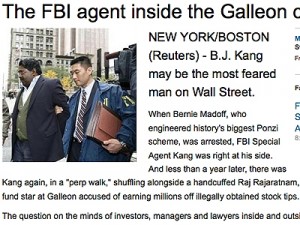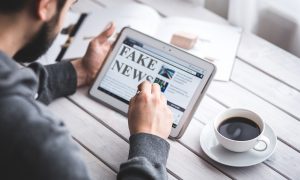Reuters reporters Matthew Goldstein and Svea Herbst-Bayliss offer a speculative article on the next potential insider-trading arrest. The article uses an FBI agent involved in two high-profile cases as an element to weave the story together.
They write:
“B.J. Kang may be the most feared man on Wall Street.
When Bernie Madoff, who engineered history’s biggest Ponzi scheme, was arrested, FBI Special Agent Kang was right at his side. And less than a year later, there was Kang again, in a ‘perp walk,’ shuffling alongside a handcuffed Raj Rajaratnam, the former hedge fund star at Galleon accused of earning millions off illegally obtained stock tips.”
The story relies heavily on court documents, as well as unnamed sources.
Weigh carefully the use of unnamed sources; be sure to marry the practice with solid reporting.
Ben Bagdikian wrote a piece for the American Journalism Review in 2005 looking at the Washington Post’s two-day ban on anonymous sources. He noted that without unnamed sources, whistleblowers and insiders would be less likely to provide information.
The problems with anonymous sources come when reporters take shortcuts in gathering information and forget to weigh a person’s credibility. Remember that during Watergate, Washington Post reporters Bob Woodward and Carl Bernstein corroborated information from anonymous sources before publishing it and let their editor, Ben Bradlee, know to whom they were granting anonymity.











